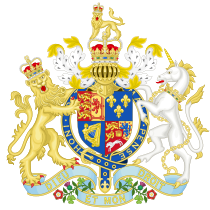The Murder Act 1752 (25 Geo 2 c. 37)[a]The full title is “An act for better preventing the horrid crime of murder”.[1]
Owing to complications associated with the adoption of the Gregorian calendar in Britain in 1750 and the start of the legal year, some sources refer to the Murder Act 1751. was passed into law in England and Wales during a time of unprecedented moral panic about crime rates in London, largely fuelled by the popular press. Several homicides had occurred in the capital during late 1751 and early 1752, and the press was predicting that many more would surely follow. So parliament ordered Sir William Yonge and Sir George Lyttleton to table a bill “for the better preventing the horrid crime of murder”, which they did on 10 February 1752.[2]
Murder was already a capital offence, but the aim of the new Act was to increase the terror of the punishment and distinguish the horror of homicide from the many other crimes that also carried the death penalty during the era of the Bloody CodeThe Bloody Code is a name given to the system of crimes and punishments in force in England during the 18th and early 19th centuries that resulted in the death penalty for offences that would today be considered minor.,[3][b]In 1688 there were 50 offences on the statute book punishable by death, but that number had almost quadrupled by 1776.[4] such as the theft of goods worth more than 12 pence.[5] This it did by legislating that:[6]
- The bodies of hanged criminals were to be denied a decent burial, instead to be either dissected by anatomists or publicly hung in gibbets and left to rot.
- The sentence of death was to be delivered immediately following the guilty verdict, thus limiting any opportunity for appeals or bargaining to obtain a more lenient sentence.
- The execution was to take place two days after sentencing, except if that would be a Sunday, in which case the sentence was to be carried out on the following Monday.
- Those awaiting execution were to be kept in solitary confinement, and fed only bread and water. Visitors were limited to members of the clergy.
Those using force in an attempt to rescue any prisoner convicted of murder were themselves guilty of a felony punishable by death, without benefit of clergyLegally enshrined right of any clergyman facing prosecution for a felony in a royal court to have the case heard instead in an ecclesiastical court. ; attempting to recover the body after execution was punishable by transportation.[1]
The Murder Act had the somewhat beneficial side effect of increasing the legal supply of cadavers for anatomical research, by allowing judges to substitute the public display of executed criminals with dissection – a fate generally viewed with horror.[7] It remained on the statute book until 1832, when key clauses were repealed.[3]
See also
- ResurrectionistsThose who exhumed the bodies of the recently deceased during the 18th and 19th centuries to provide cadavers to anatomists for their research.
Notes
| a | The full title is “An act for better preventing the horrid crime of murder”.[1] Owing to complications associated with the adoption of the Gregorian calendar in Britain in 1750 and the start of the legal year, some sources refer to the Murder Act 1751. |
|---|---|
| b | In 1688 there were 50 offences on the statute book punishable by death, but that number had almost quadrupled by 1776.[4] |

